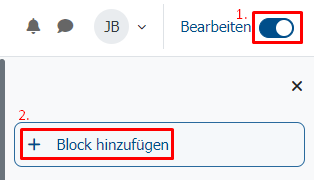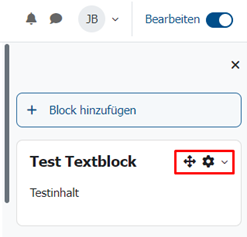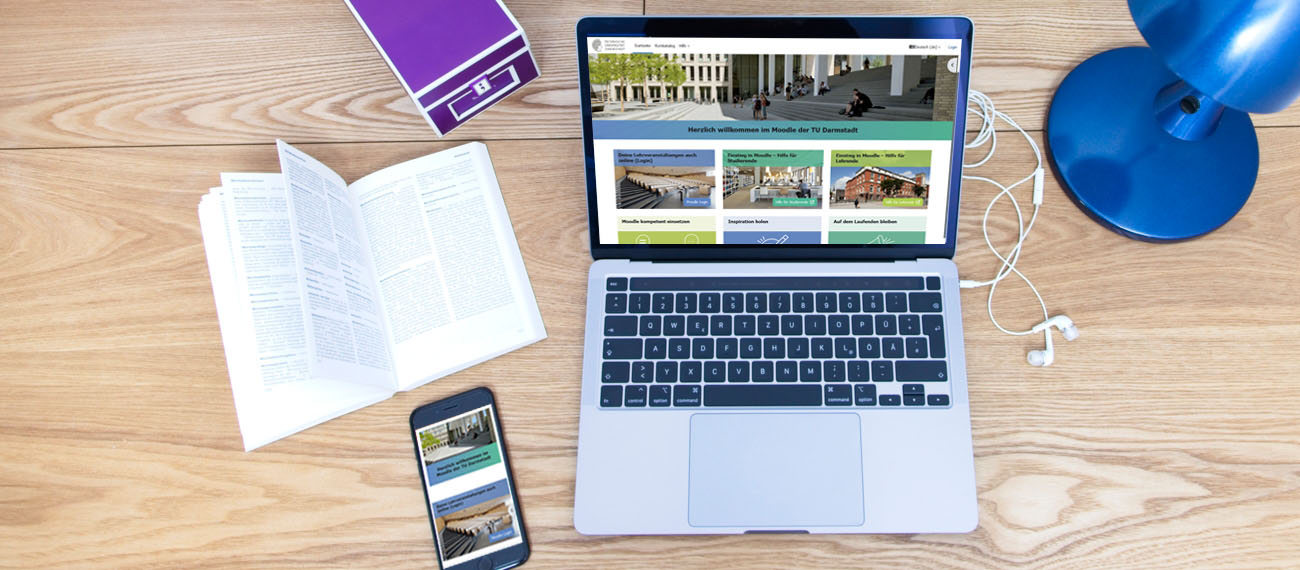Blocks in Moodle courses
You can add blocks to each Moodle course room. These allow you to organise the course more clearly and extend the use of the course.
Such blocks appear as standard in the right-hand column of a Moodle course page. For this reason, blocks can also be embedded well in very content-rich courses, as they make important information easily accessible. For example, you can integrate a calendar that automatically displays all relevant deadlines into the course room in this way.
Following we would like to give you a quick overview of the available blocks in Moodle. We will also explain how to set up a new block using an example.
Adding a new block

As standard, no blocks are activated after the creation of a new Moodle course room.
To create a new block, you must first set your course to edit mode. To do this, click on the Edit slider at the top right of the course. You can then add a new block within the block bar. You can open the block bar on the right side using the grey arrow.
Note: Please note that the Edit button will only be displayed if you have editing rights in the respective course room (further information on roles and rights on Moodle can also be found in our FAQ articles Roles and rights and Role assignment).
After you have clicked on the Add block button, the block selection opens. Here you can select the desired block type from a range of different types. You can find an overview of the blocks available in Moodle and their functions in the Block overview section.
Example of use: Creating a new block
We have selected the block type text block as an application example below.
After selecting the corresponding block type, the new block is created by default in the right course column (see image “A newly created text block”).
The small gear symbol in the block takes you to the configuration menu where you can make further settings. The Text block block type, for example, offers you the option of assigning a new block title.

In a second step, you can now fill the text block with content using the text editor. Further information on working with the text editor can also be found in our FAQ article on the functional features of the text editor
Finally, you can adjust the placement of the new block. To do this, you will find the sub-items Block placement and Block placement on this page in the configuration menu, which offer you a variety of options for displaying the block in the course room.

